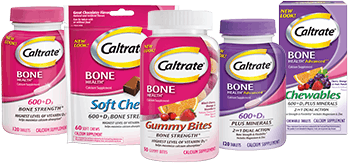VITAMIN D: WHAT DO YOU NEED TO KNOW
WHAT IS VITAMIN D?
As nutrients go, vitamin D is in a class by itself. That's because vitamin D is actually a hormone that the body produces in response to direct exposure to Ultraviolet B (UVB) rays from the sun. Vitamin D is classified as a fat-soluble vitamin, which means that both the vitamin D your body produces and that which you consume in your diet is stored in fat tissue for later use.
BENEFITS OF VITAMIN D
Vitamin D helps maximize your body's ability to absorb calcium you take in from foods and supplements. It also regulates calcium's movement into, and out of, your bones in order to maintain calcium levels throughout the body. Without enough vitamin D circulating in your bloodstream, absorption of adequate calcium is difficult.
THAT'S NOT ALL VITAMIN D DOES
Recent science suggests that vitamin D influences cell growth, immune function, and may help support nervous system functions. One thing is for certain: adequate vitamin D is essential to maintain strong bones.
HOW MUCH VITAMIN D DO I NEED?
According to the Institute of Medicine (IOM), the amount of vitamin D recommended daily depends on your age. From age one to 70, get 600 IU daily; people over the age of 70 should get 800 IU per day. Vitamin D requirements do not increase during pregnancy and breastfeeding.
WHERE DO I GET VITAMIN D?
You can get vitamin D from direct sun exposure, certain foods, and supplements.
Strong sunlight triggers vitamin D production in your skin. Your liver, kidneys, and cells throughout the body complete the conversion of vitamin D's most active form, 1,25-vitamin D3.
In theory, you should be able to make all the vitamin D you need by getting adequate sunlight. In reality, many people do not produce the required vitamin D or get adequate amounts from food and dietary supplements. According to the 2010 Dietary Guidelines for Americans, most children and adults consistently come up short for vitamin D.
What factors affect my vitamin D status?
You may not be getting enough vitamin D if you:
- …cover all exposed skin when outside, or use sunscreen with an SPF of 8 or above. (This effectively blocks most or all of the UVB rays necessary to begin vitamin D production in the skin.)
- …have dark skin, live in areas greater than 20 degrees latitude from the equator, or live in areas with smog and pollution. Darker skin contains melanin, a compound that blocks the production of vitamin D in response to UVB rays.
- …are overweight. The body stores vitamin D in body fat. Ironically, excessive body fat absorbs and holds onto vitamin D, making it unavailable for supporting bone health and its other important functions. The more body fat, the less available vitamin D is to the body; people with a Body Mass Index of ≥30 may need more vitamin D than non-obese people to obtain optimal blood levels.
- …are a senior. As you age, your capacity for producing vitamin D from the sun declines. Older people who stay indoors compound their potential vitamin D deficiency because they limit sunlight exposure.
- …are a breastfed infant. Human milk is relatively low in vitamin D, and infants who are exclusively breastfed run a high risk of vitamin D deficiency when they are not also given supplemental vitamin D. The American Academy of Pediatrics recommends that all breastfed and partially breastfed infants receive 400 IU of vitamin D daily starting in the first days of life.
Sources of vitamin D in food
For such an important nutrient, few foods are natural sources of vitamin D. Some commonly consumed foods, including milk and orange juice, are fortified with vitamin D. Here are some foods that contain vitamin D:
Food
Salmon (sockeye), cooked, 3 ounces - 447 IUs per serving
Mackerel, cooked, 3 ounces - 388 IUs per serving IUs per serving
Tuna, canned in water, drained, 3 ounces - 154 IUs per serving
Milk, any fat level, vitamin D-fortified, 1 cup - 115-124 IUs per serving
Orange juice, vitamin D-fortified (check labels for exact amounts) - 100 IUs per serving
Yougurt, fortified, 6 ounces - 80 IUs per serving
Egg yolk, 1 large - 41 IUs per serving
Source: Adapted from Dietary Supplement Fact Sheet: Vitamin D.
Dietary Supplements
Since relatively few commonly consumed foods supply vitamin D, it's often difficult to get the vitamin D you need from diet alone. For example, if you're under 70 years of age, you'd need to consume one of the following to meet your recommended levels of vitamin D:
- Six eight-ounce glasses of fortified milk or orange juice
- 12 ounces of canned tuna
- A combination of three ounces of mackerel and nearly 18 ounces of fortified yogurt
It's no wonder many people (especially those of us who don't live in California or Florida!) can come up short when it comes to vitamin D.
Luckily, dietary supplements can help fill the gap to help you reach your daily goals.
A note from the experts:
Some experts in the field of vitamin D research believe that higher amounts of vitamin D than those recommended by the IOM may be necessary for maintaining higher levels of vitamin D in the blood stream to support bone and general health.
To find out how much vitamin D is right for you, see your doctor and ask him or her to check your serum levels of 25-hydroxyvitamin D.
Vitamin D supplements have the potential to interact with several common medications and certain medications may impact your body's vitamin D status. Ask your doctor about the potential for these interactions.
BONE HEALTH CENTRAL

The story of your bones: calcium at every age
Calcium plays a key role throughout each stage of your life. Find out what your calcium needs are.


